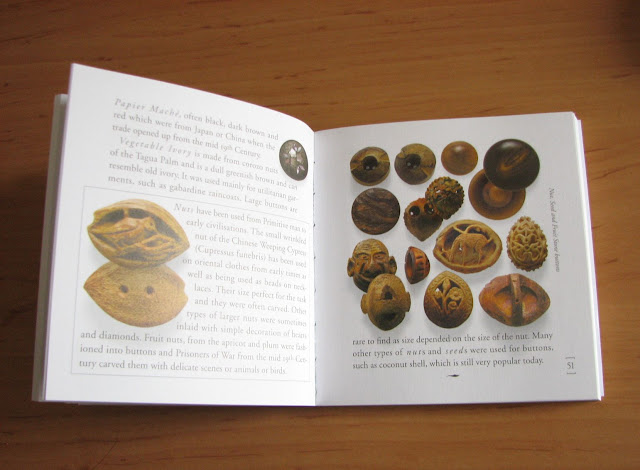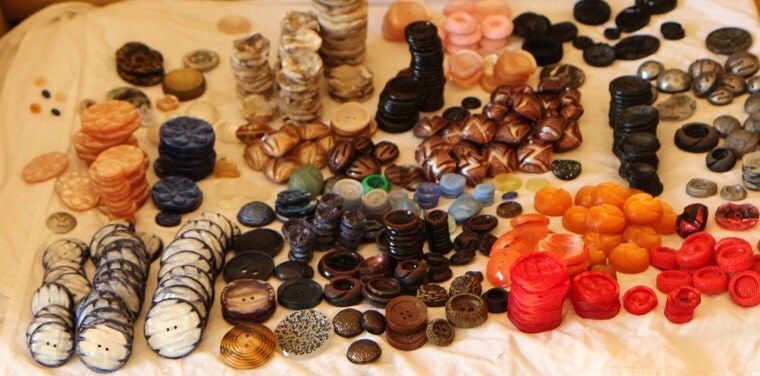It is not a new publication, as it was issued in 1993. As you can see, the pictures look really old, and what was new then, is already vintage today. ;) For example, 1970s buttons are referred to as modern.
It promises to answer some very important questions: What's it made from? Is it old? and What's is worth? Well, I would be wary of saying that the book address properly these issues. It does provide help when it comes to identifying the material. However, little is said about early plastics! You can admire incredible button in the pictures, but the explanation is scarce.
 |
| Bakelite buttons - really nice pieces, showing the variety of colours and style. However, no guide to Bakelite identification. |
 |
| Glass buttons shanks - there is a guide to the terms and shapes, but very little information as to when each type of shank was used. So little help with my antique buttons... |
So, in other words, I'm still looking for the Button Bible...
_________________________________________________________________________
Title: Button Button · · Identification and Price Guide
Author: Peggy Ann Osbourne
Published: 1993
ISBN: 0-88740-464-2














